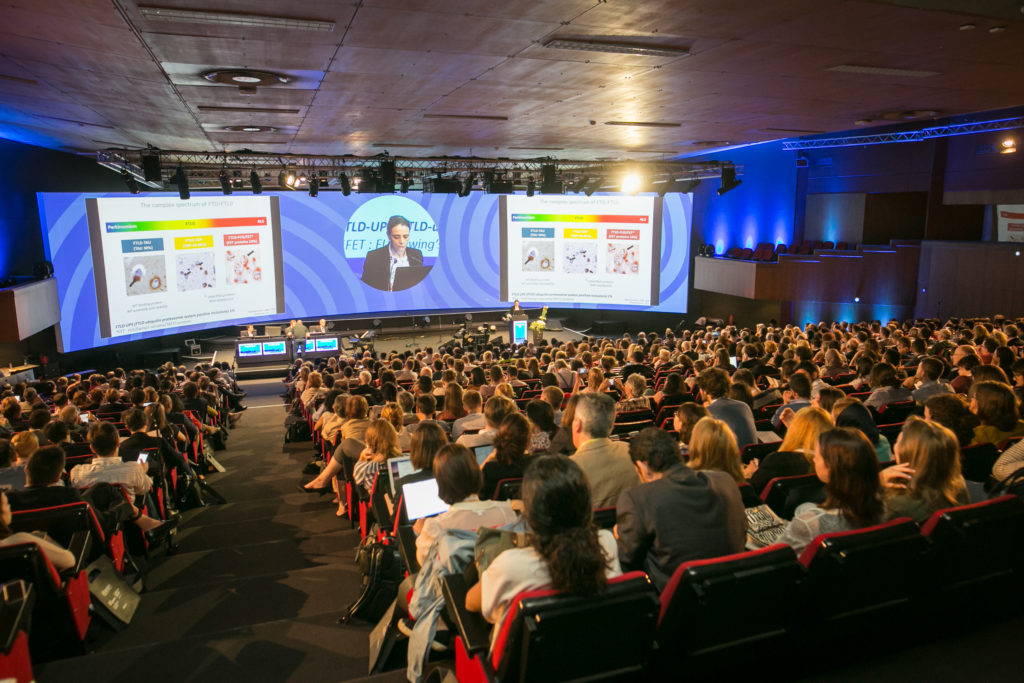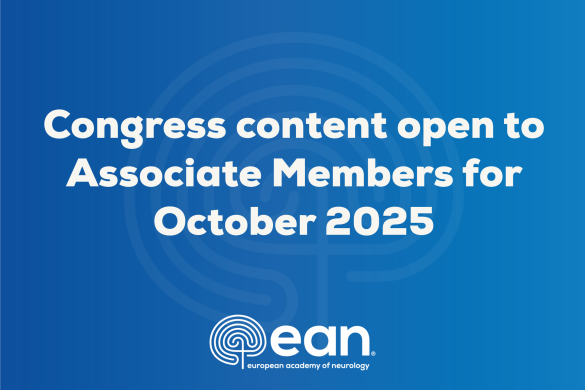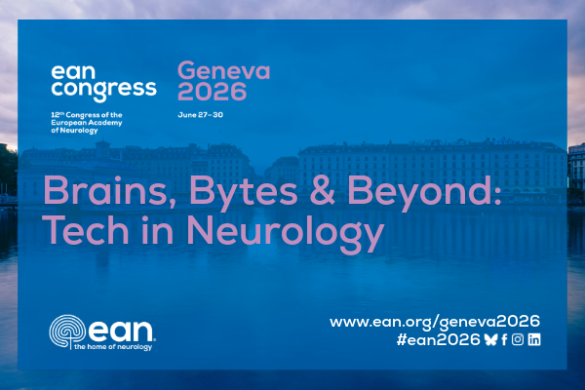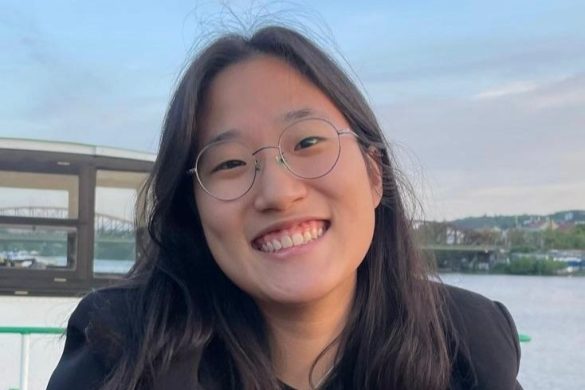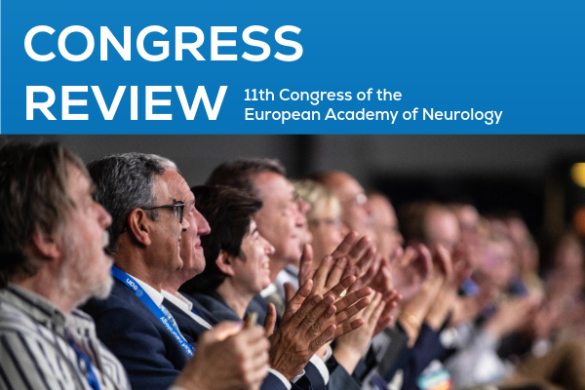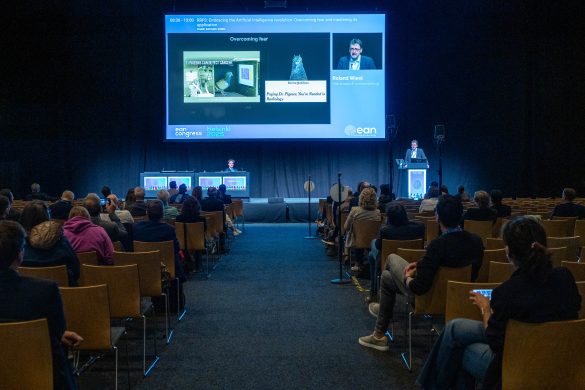Symposium 1: EAN/MDS-ES: Tauopathies: pathophysiology, clinical features and experimental therapies
Chairpersons:
Carlo Colosimo, Terni, Italy
Isabelle Le Ber, Paris, France
The session was attended by a large number of participants and was followed by interactive session between the speakers and the audience.
Prof. T. Fleming Outeiro, from Goettingen, Germany, gave a very interesting lecture about “Tau protein in normal and pathological brain”. He lectured on the misfolding of tau protein and its effects. Protein folding and homeostasis remain a constant challenge for the normal cell. Tau is a complex microtubule binding protein. Tau hyperphosphoration impairs the normal interaction with microtubule and result in neurofibrillary tangle. Hyperphosphorylated tau gains toxic function and loses normal function. He suggested that tau deletion impairs hippocampal response to insulin, since tau physiologically regulates brain response to insulin. Insulin receptor activation could prevent tau hyperphosphorylation.
Prof. C. Colosimo from Terni, Italy, talked about the 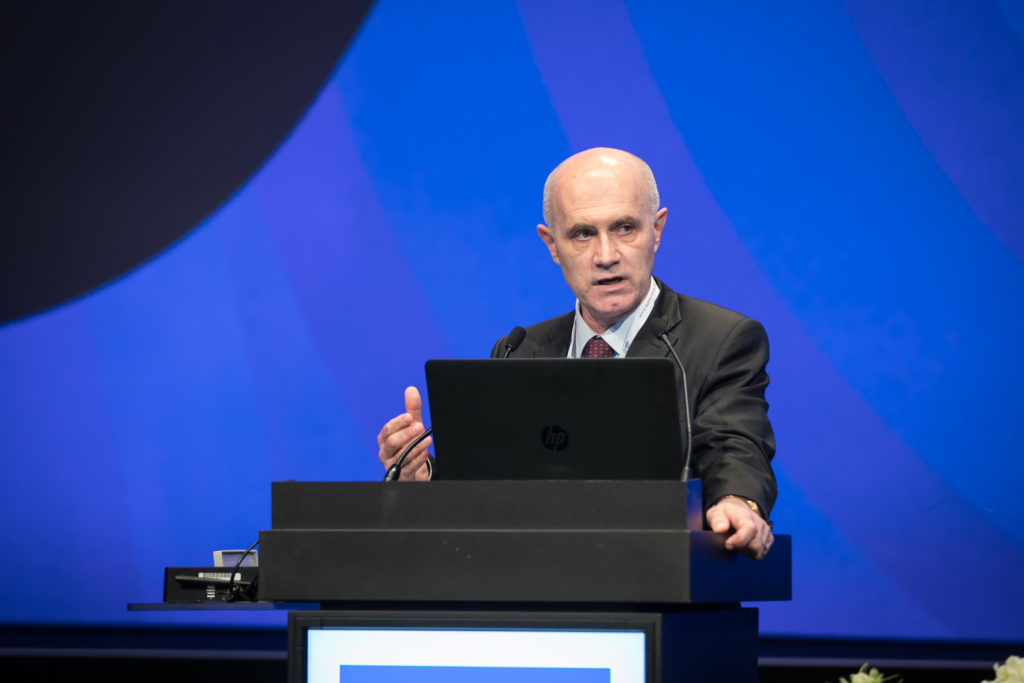 intriguing subject of “Progressive supranuclear palsy and corticobasal degeneration: one disease or two.” He highlighted the heterogeneity of the clinical presentation of PSP/CBD and the need for clinical biomarkers for early detection of PSP. Till 1996 , clinical criteria for PSP included possible, probable, and definite PSP but the new MDS PSP criteria described 4 subtypes instead of the previous three, the new one being clinical features suggestive of PSP. The new MDS PSP criteria also consider cognitive features and bradykinesia. Interestingly, contrary to popular perceptions, PSP Richardson subtype is seen only in a quarter of PSP patients after post mortem studies. Prof. Colosimo also described various subtypes of PSP including a rarer cerebellar type PSP-C. There is always a controversy whether PSP and corticobasal syndrome should be classified separately o together. However, there is considerable overlap between the pathophysiology of these two entities. He also highlighted the need for new biomarkers and the role of functional neuroimaging.
intriguing subject of “Progressive supranuclear palsy and corticobasal degeneration: one disease or two.” He highlighted the heterogeneity of the clinical presentation of PSP/CBD and the need for clinical biomarkers for early detection of PSP. Till 1996 , clinical criteria for PSP included possible, probable, and definite PSP but the new MDS PSP criteria described 4 subtypes instead of the previous three, the new one being clinical features suggestive of PSP. The new MDS PSP criteria also consider cognitive features and bradykinesia. Interestingly, contrary to popular perceptions, PSP Richardson subtype is seen only in a quarter of PSP patients after post mortem studies. Prof. Colosimo also described various subtypes of PSP including a rarer cerebellar type PSP-C. There is always a controversy whether PSP and corticobasal syndrome should be classified separately o together. However, there is considerable overlap between the pathophysiology of these two entities. He also highlighted the need for new biomarkers and the role of functional neuroimaging.
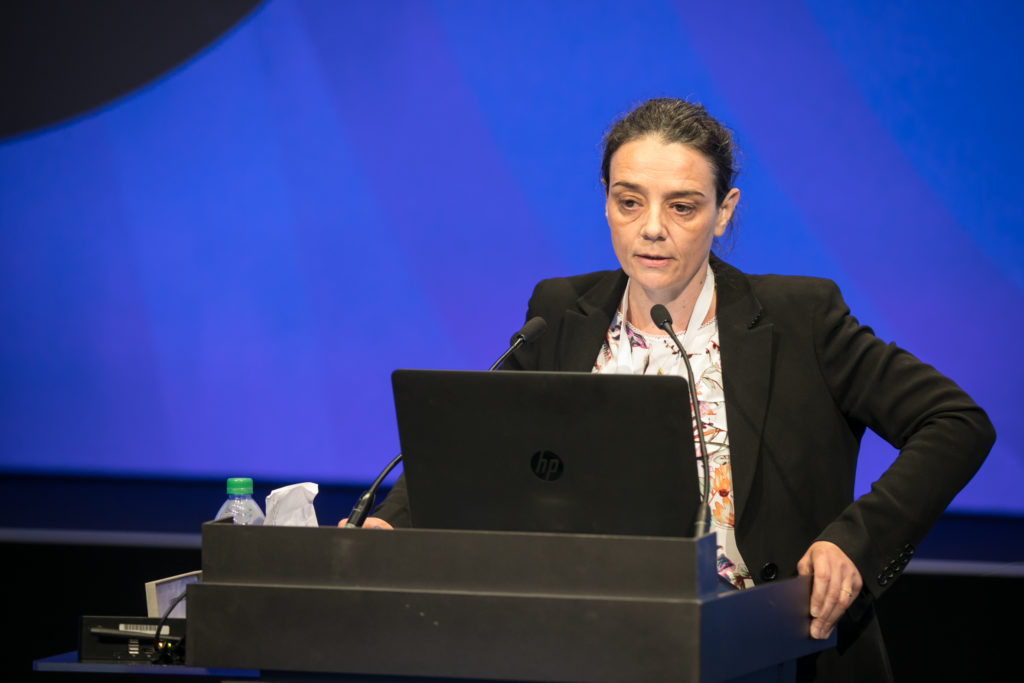 Prof. I. Le Ber from Paris, France, talked about “The spectrum of frontotemporal dementias”. She elaborated on various clinical, genetic, and radiological aspects of frontotemporal dementia (FTD). She showed that more than 50 subtypes of FTD are present, and that more than 20 causative genes have been discovered so far. The common genes/proteins involved are MAPT, TDP-43 & FUS. There are some interesting radiological and genetic correlations, for e.g. FTD due to FUS gene mutation shows significant caudate atrophy. Moreover, FTD secondary to FUS mutation presents early with significant behavioural problems. She also stressed on the need for biomarkers for the early diagnosis of FTD
Prof. I. Le Ber from Paris, France, talked about “The spectrum of frontotemporal dementias”. She elaborated on various clinical, genetic, and radiological aspects of frontotemporal dementia (FTD). She showed that more than 50 subtypes of FTD are present, and that more than 20 causative genes have been discovered so far. The common genes/proteins involved are MAPT, TDP-43 & FUS. There are some interesting radiological and genetic correlations, for e.g. FTD due to FUS gene mutation shows significant caudate atrophy. Moreover, FTD secondary to FUS mutation presents early with significant behavioural problems. She also stressed on the need for biomarkers for the early diagnosis of FTD
Prof. G. U. Hoeglinger from Munchen, Germany, gave a talk on Emerging disease-modifying treatments for tauopathies. He presented various new and ongoing trials on the treatment of PSP. The trial drugs target various aspects of tau pathology like aggregation, kinase inhibition, OGA inhibition, active and passive vaccination/ anti tau antibodies However, many of the trials failed to show clear benefit. Amongst the various trials, anti-tau antibody trial reached phase two and shows some promise thought it is too early to comment . The other few early but promising trials include PERK/ NRF2 inhibitors, CoQ 10, etc. Almost all trials included Richardson subtype of PSP patients. However, he hoped that the trials would encompass other subtypes of PSP patients also.
Reported by Shakya Bhattacharjee, RRFS member, UK

